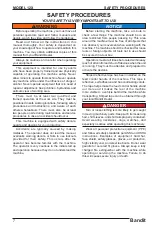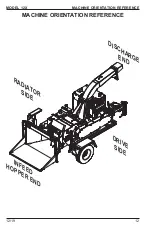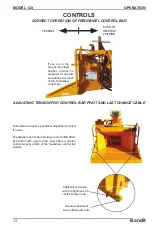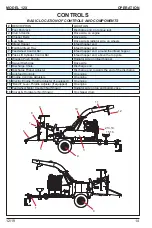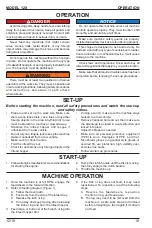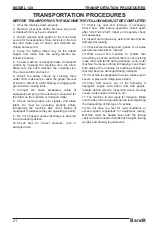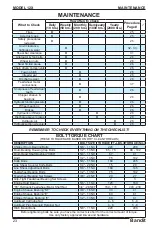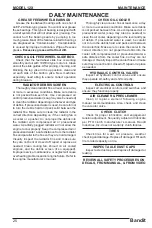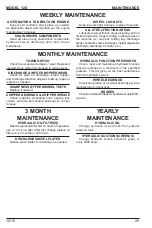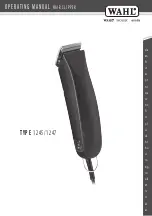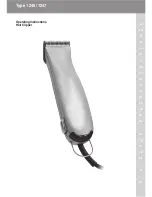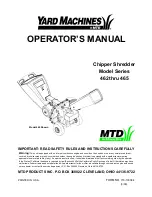
Bandit
21
MODEL 12X
TRANSPORTATION PROCEDURES
TRANSPORTATION PROCEDURES
BEFORE TRANSPORTING THE MACHINE THE FOLLOWING MUST BE COMPLETED
1. Shut the machine down properly.
2. Remove all excess debris. Remove any wood
or debris which may have collected.
3. Return wooden push paddle to the mount and
secure for transportation. Store all tools in the tool
box and make sure all boxes and cabinets are
closed and secured.
4. Close the folding infeed tray for the infeed
hopper and make sure the spring latches are
locked into place.
5. Couple machine or transport trailer to transport
vehicle by lowering the machine onto the hitch.
Make sure the hitch matches the coupling size.
Then secure hitch and lock it.
6. Attach the safety chains by crossing them
under hitch, make sure to allow the proper amount
of slack in chains to avoid binding or dragging the
ground when making turns.
7. Connect the brake breakaway cable (if
equipped) and plug in the electrical connection for
the lights on the machine or transport trailer.
8. Check running lights, turn signals, and brake
lights. All must be operating properly before
transporting the machine. Also check brakes (if
equipped) to make sure they are operating correctly.
9. Do not transport unless discharge is secured
into a transport position.
10. Check tires for correct pressure, cuts or
damaged rims.
11. Check lug nuts and retorque if necessary.
Check new units before operation, check again
after 32-40 km (20-25 miles) and regularly check
at least weekly.
12. Inspect and replace any axle dust caps that are
damaged or leaking.
13. Check wheel bearings and grease or oil axles
per axle manufacturer’s manual.
14.
Walk around the machine to confirm that
everything is secure and that there is not anything
loose that could fall off during transport. Look under
machine to ensure nothing is dragging. Look down
both sides of the machine for anything sticking out
that may become damaged during transport.
15. If machine is equipped with a vise, make sure to
secure in place and clamp jaws closed.
16. Close and secure any of the following, if
equipped: engine cowl doors and side panels,
radiator debris screens, inspection doors, housing
covers, tanks caps and covers, etc.
17. The machine is now ready for transport. Make
sure to obey all local regulations and laws regarding
the transporting of this type of machine.
18. Do not drive too fast for road conditions or
exceed speed regulations for equipment towing.
Machine must be hauled level and the towing
vehicle must be sized to handle hitch weight, towing
weight, and braking requirements.

